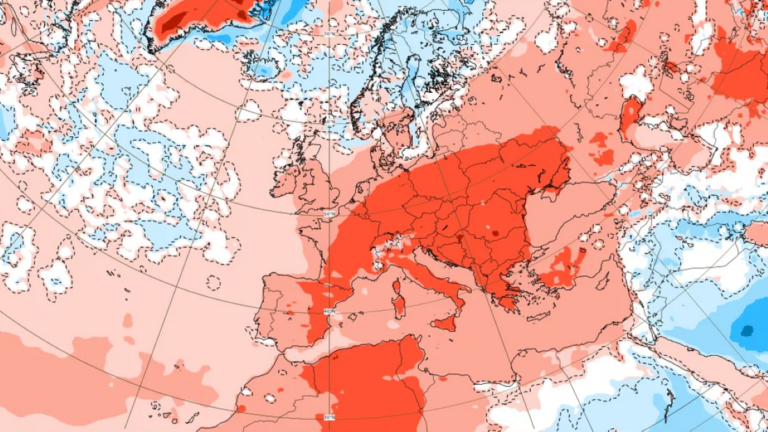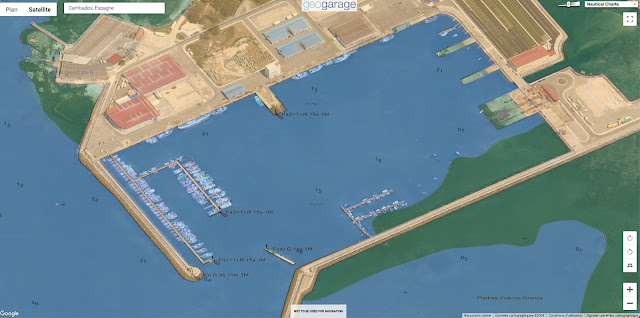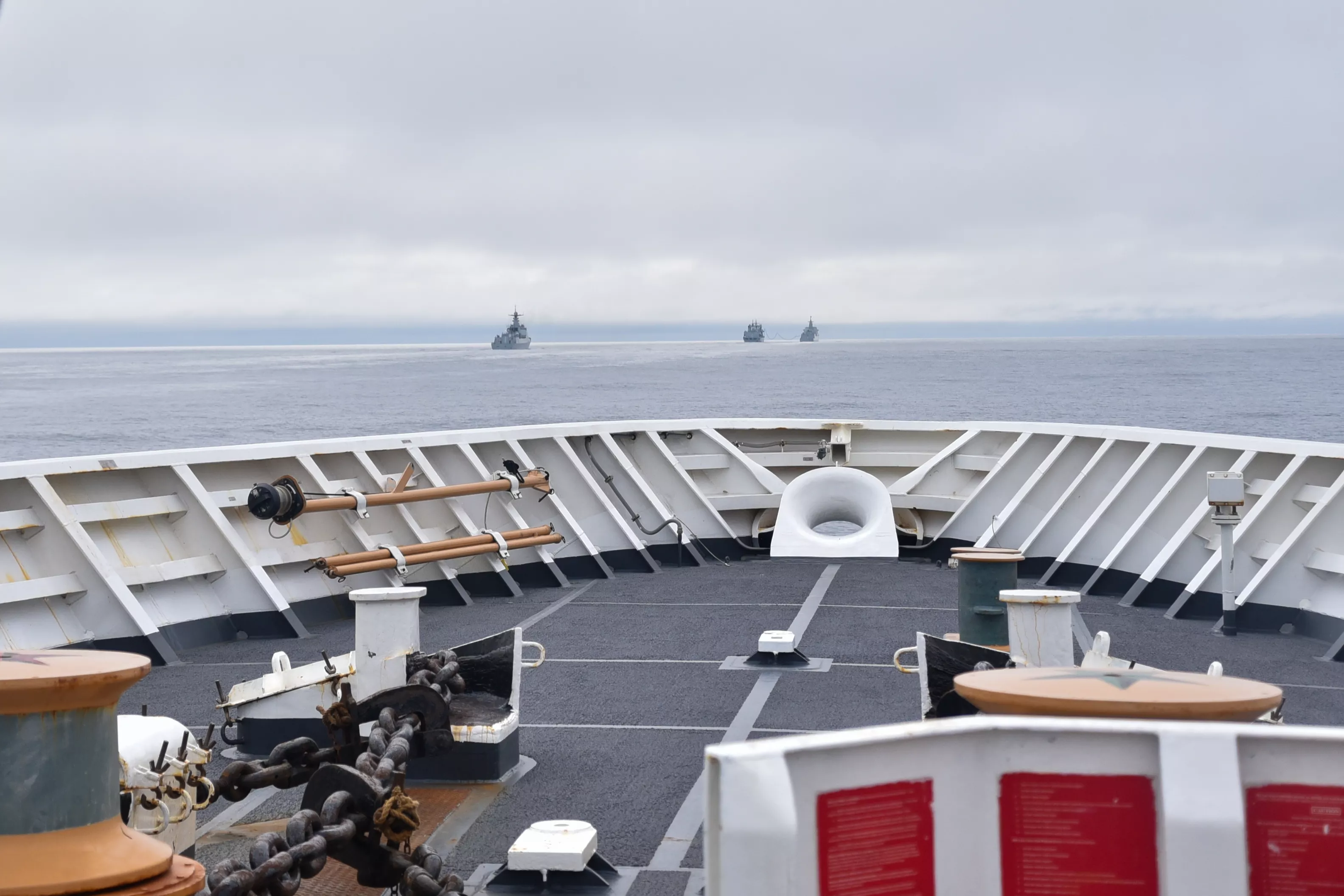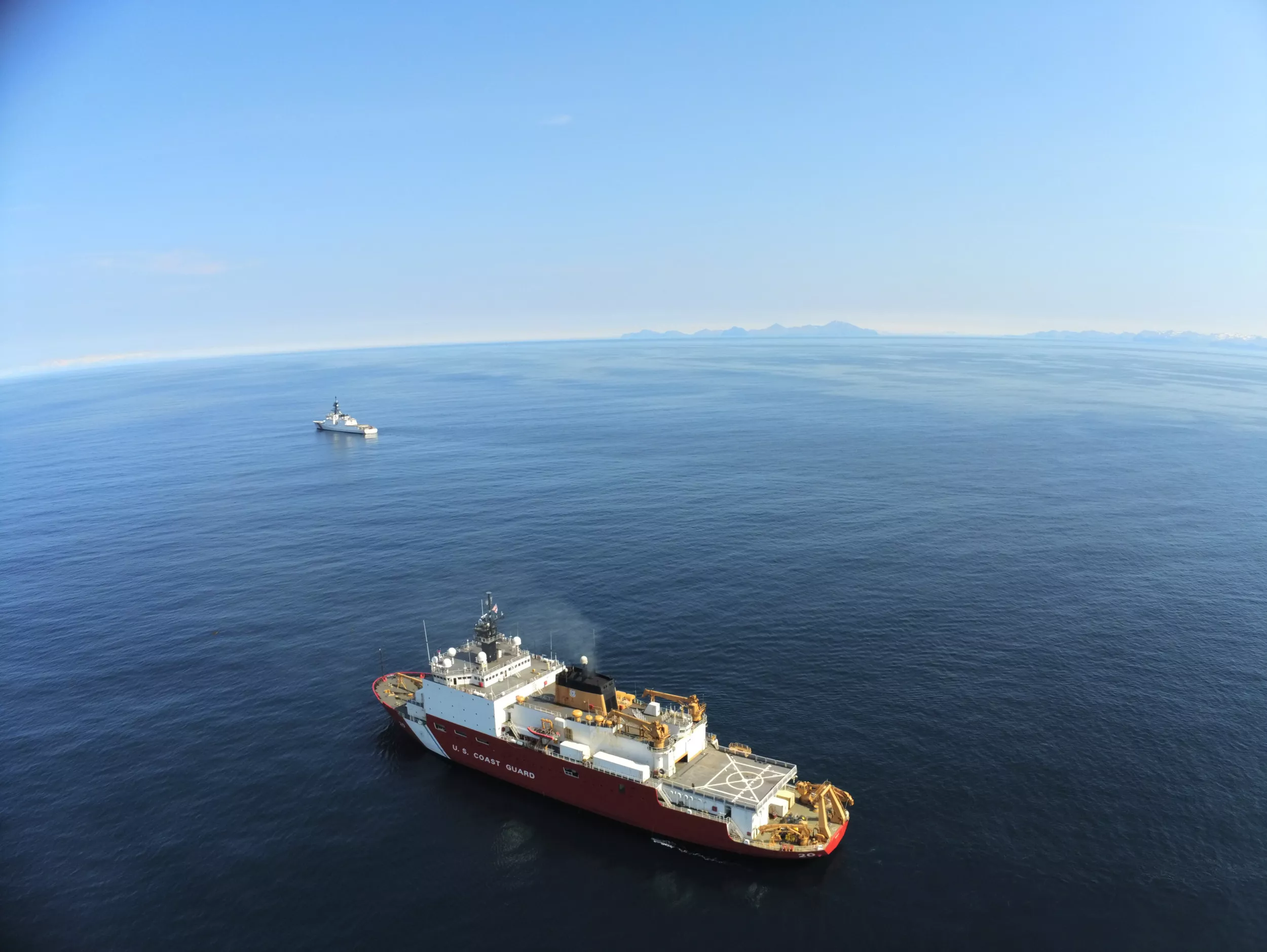Illustration by Irene Suosalo
From Bloomberg by Jordan Robertson and Drake BennettNorway has always relied on the sea.
Fish long dominated the country’s diet, and in the 19th century the bloody harvest from Norwegian whalers provided much of the world’s lamp oil.
Then came the discovery of an even more lucrative source of energy in the depths: massive petroleum and natural gas deposits in Norway’s sovereign waters, which turned it into the world’s most
progressive petrostate.
All of this has left the country with a great interest in understanding what happens off its famously wrinkled coast.
That’s why the
Norwegian Institute of Marine Research exists.
Headquartered in the city of Bergen on Norway’s southwestern coast, the government institute’s 1,100 employees monitor the health of the country’s salmon and cod stocks, measure the environmental impact of deep-sea drilling platforms and offshore wind farms, and chart how climate change is altering the northern oceans.
One of its acoustic engineers, Guosong Zhang, works out of an office cluttered with cables and devices and computers of various vintages, or on one of the institute’s eight ships, spending weeks at a time at sea.
Watch: Is Russia Waging War Under the Seas?
Born in Norway and educated in China, Zhang is brusquely matter-of-fact in a way that feels true to both cultures—in conversation, he doesn’t fill silences.
Much of his work involves a set of five powerful microphones strung along a 31-mile cable on the floor of the Norwegian Sea called the Lofoten-Vesterålen Ocean Observatory.
Known as
LoVe to the researchers who run and maintain it, it’s mostly a scientific tool, but it’s also used by Norway’s military, which removes sensitive information before releasing the rest to the public.
The government is vague about how it uses the data but acknowledges it could serve to identify specific ships in the area, whether those of Norway’s own military, its NATO allies or its adversaries.
That also makes it an unorthodox part of the surveillance apparatus monitoring the
increasingly provocative activities of Norway’s neighbor to the east, Russia.
Zhang.
Photographer: Benjamin Fredriksen/NRK
The cable that carries the data from the microphones back to shore is a capillary in a global circulatory system.
Hundreds of underwater communications cables circle the planet.
Fiber optics jacketed in steel and plastic to protect against breakage and corrosion, they’re often barely an inch in diameter.
They trace coastlines, traverse oceans and carry 99% of the world’s international data.
They are at once vital and vulnerable.
In April 2021, Zhang was just back from Easter break when he noticed the LoVe observatory had gone quiet.
It wasn’t unusual for the cable to have problems—the isolated northern region where it leaves the shore often has power outages.
But when Zhang rebooted the computers remotely, there still wasn’t any data coming in.
When he contacted technicians from the IT company that had installed the equipment, they didn’t have any luck either.
That meant the problem probably lay out at sea.
Zhang hired engineering firms to do various tests of the cable’s electrical and optical systems; they eventually zeroed in on a segment some 17 miles offshore.
It was just past one of the cable’s relay units, which serve to amplify the light pulses carrying information, ensuring the signal doesn’t die.
Finding out more would mean getting access to the equipment itself, an expensive and time-consuming process requiring specialized ships and trained operators of submersible drones—both in short supply in the Arctic from the spring through early fall, when oil and gas companies take advantage of the sea ice thaw to repair their equipment, and when the institute’s own research vessels are booked for fish population surveys and other expeditions.
So Zhang’s investigation stalled.
Finally, five months after the outage, Equinor ASA, Norway’s state-owned petroleum company and a partner on the observatory, informed the institute it would sponsor a mission to examine the cable.
The company offered Zhang and his colleagues the use of the
Havila Subsea, a 321-foot-long support vessel Equinor had chartered for an unrelated job.
On Sept. 10, the researchers gathered around a computer in Bergen, watching a live video feed from one of the drones—a boxy 8,000-pound robot measuring 6 feet by 6 feet by 10 feet with a pair of hermit-crab-like arms.
As it descended, the glare of its lights caught krill jackknifing past its camera lens.
The observatory’s yellow data cable soon emerged out of the blue-green haze, then the relay unit: a van-size metal cage, also yellow, protecting the equipment inside.
At the approach of the submersible, fish that were sheltering inside the cage drifted lazily out.
Then the drone circled the cage, and Zhang had trouble believing what he saw.
The output side should have been identical to the unit’s input side—the same machinery, the same cable extending north toward the next relay unit.
But there was none of that.
The equipment on that side had been ripped out, and the 12-ton section of cable attached to it was missing.

Source: Lofoten-Vesterålen Ocean Observatory
“It had been there for three years, and suddenly it’s gone,” he recalls.
The cable hadn’t malfunctioned; it had disappeared.
Someone, or something, had taken it.
"There’s this conception that the ocean is quiet,” says Geir Pedersen, a physicist and the manager of the LoVe observatory.
He points out that Jacques Cousteaucalled his pioneering 1956 undersea documentary The Silent World.
But the ocean is actually noisy.
“When you start to look into it,” Pedersen says, “you see that everything makes sound, and sound is critical for the survival of everything that inhabits the ocean.” It’s also critical to how we’re coming to understand that world.
“One of the things about the ocean is that light doesn’t travel far underwater,” he says.
“Using cameras, you’re not able to see very much around you.
But listening, or sending out pulses of sound, then you’re able to truly see what happens underwater.” A growing, disruptive share of that noise comes from human activity.
The five microphones of the LoVe observatory are spaced along a curve that extends northwest on the seafloor from a tiny fishing village in far northwestern Norway called Hovden.
Because sound waves can travel hundreds or thousands of miles underwater, these sensitive mics—hydrophones, technically—can detect sounds in the middle of the Atlantic Ocean.
In his office in Bergen, Pedersen plays samples of the cacophony LoVe has captured: the reedy glissandos of humpback whales; a tanker ship propeller’s thrum; the hoarse, rhythmic roar of seismic air guns used to detect oil and gas deposits under the seabed.
From up toward the polar ice cap, the hydrophones record the steady drumbeat of icebergs crumbling into the water as they melt.
“Sound is critical for the survival of everything that inhabits the ocean,” Pedersen says.
Photographer: Andrea Gjestvang/Bloomberg
Usually, when an undersea cable is damaged, it’s an accident or an act of nature.
A ship drops anchor in the wrong place; an undersea earthquake wrenches apart a cable.
Fishing trawlers dragging bottom nets are often to blame.
In February 2024,
internet traffic in Africa slowed when Houthi rebels in Yemen hit a cargo ship with rockets, causing it to drag its anchor across three cables as it sank.
Sometimes, though, the cables themselves are targets.
In the early 1970s the US Navy and intelligence agencies successfully attached a giant recording device to an undersea Soviet cable in the Sea of Okhotsk—divers had to descend every month to
change the tapes.
And more recently,
cables and
other pieces of undersea infrastructure have been damaged in the waters along NATO’s rim.
The modern world turns out to rely greatly on unprotected bits of equipment in remote places.
“We are talking about thousands and thousands of kilometers of infrastructure between Europe and the United States and Asia,” says Katarzyna Zysk, a professor of international relations and contemporary history at the Norwegian Institute for Defence Studies in Oslo.
“This is a network that is extremely hard to surveil, to monitor and to protect.
This is infrastructure that is highly vulnerable to sabotage.”
The remote fishing village of Hovden in northwestern Norway.
Photographer: Benjamin Fredriksen/NRKCompleted in 2018 at a cost of $10 million, the LoVe observatory’s cable enters the ocean beneath a beach 600 miles north of Bergen in the Norwegian archipelago of
Lofoten.
It’s a wild, stirring landscape of rock pinnacles and fjords.
In the fishing villages dotting the coast, colorful houses alternate with wooden racks called hjell, where cod cure in the open air.
The LoVe’s local caretakers, brothers Jan-Tore and Wilhelm Enoksen, are shark fishermen who live, with fewer than a dozen others, in nearby Hovden.
During a recent visit, Jan-Tore, 58, showed Bloomberg Businessweek a red wooden hut above the beach.
Inside, a rack of computer servers and several desktop PCs process the data from the cable’s sensors.
The caretaking job consists mainly of turning the power back on after winter storms, Jan-Tore says.
He and his brother, who’s a year younger, have never seen anyone suspicious, but if anyone did try to break in, they’re prepared: “We’d shoot them,” he deadpans, “with harpoons.”
 Wilhelm Enoksen, one of the cable’s caretakers.
Wilhelm Enoksen, one of the cable’s caretakers.Photographer: Benjamin Fredriksen/NRK
From shore, the cable runs across a shallow coastal shelf before dropping into the Norwegian Sea’s depths.
There the Gulf Stream, intermingling with frigid, nutrient-rich currents from the Arctic, creates a rich spawning ground and a favored migration route for fish and whales.
Nestled in their own protective cages, the hydrophones placed along the way are roughly the dimensions of a handheld mic.
The sounds they pick up are augmented by other tools: echo sounders that ping off passing fish, profilers to gauge wave height, sensors that measure acidity, clarity and carbon dioxide levels.
All that information is sent back to shore, becoming the basis for a steady stream of research papers.
Other sounds picked up by the hydrophones garner less public discussion.
Norway and Russia share both a land border and the
rich fishing waters of the Barents Sea.
In recent years, Norwegian officials have charged Russia with using its
submarine fleet—one of the world’s largest—to surveil and threaten critical NATO subsea infrastructure.
Last year the Norwegian military released
videos showing Russian nuclear attack subs patrolling off Norway’s coast and following the routes of undersea gas pipelines and telecommunications cables.
 The red wooden hut above the beach in Hovden housing the observatory’s technical equipment.
The red wooden hut above the beach in Hovden housing the observatory’s technical equipment.
Photographer: Tom GibsonThe Norwegian Defence Research Establishment (the
Forsvarets forskningsinstitutt, or FFI), which serves as the chief adviser to the Ministry of Defence and the Norwegian Armed Forces on defense-related science and technology research, was involved in the LoVe project from its earliest days, Pedersen says.
And while he says he doesn’t know how the military uses the information it scrubs from the LoVe feed, he notes that all ships have unique acoustic signatures that can be used to identify and track them.
Sea mines can even be programmed to detonate when vessels bearing specific acoustic signatures pass by.
In a statement, the FFI confirmed its involvement with the observatory, while emphasizing that its efforts focus not on detecting Russian vessels, but on obscuring the movements and acoustic signatures of its own military vessels and those of NATO allies.
The FFI scrubs any such incriminating information before the LoVe data is made available to the public.
“If there has been an exercise with Norwegian or allied ships nearby, we also do not publish data from the period the vessels have been there,” the institute specifies on its website.
In the fall of 2021, after determining that LoVe had lost a segment of cable, Zhang confronted the next question: Where was it? At that point he still thought that whatever happened had likely been inadvertent.
A fishing trawler’s net is often framed by weighty metal “doors” that keep it open as it drags through the water.
If one of those had snagged the cable by accident and pulled it out of place, the crew might not even have noticed.
Nonetheless, if Zhang could identify the ship and trace its path, he might have an idea of where to look for the missing equipment.
To do that, he contacted the
Norwegian Coastal Administration and requested the automatic identification system (AIS) data of all ships that had been above that stretch of cable when it went dark on April 3, 2021.
(
International law requires fishing vessels and other large ships to have transponders constantly transmitting their speed, location and other information.) Zhang imported those AIS results into a software program that let him create interactive maps charting each ship’s course on the morning of the incident.
The maps showed about a dozen ships.
Most of them had spent that April 3 tracing long arcs through a fishing ground a little to the southwest of the two relay units bracketing the missing segment.
But one ship, a 197-foot-long, Russian-flagged trawler called the
Saami, had behaved differently.
Traveling at about 10 knots, it had passed back and forth over the LoVe cable at least four times.
“I saw this boat, only this one boat, cross the cable at this time,” Zhang says.
“I locked my suspicion on this one boat.” Once he’d narrowed his parameters to the span of time when the cable disappeared, the paths of the other ships dropped away on his computer screen, leaving just the tight scribble traced by the Saami.
At the precise moment the cable went dead, the ship was right above it.
In late November, Zhang got a chance to trace the Saami’s route in person.
With the Arctic winter beginning and oil and gas work slowing, he was able to book a drone operator and time on one of the institute’s own vessels, the
G.O.
Sars.
He and his colleagues took the ship out from Tromsø, a city of 78,000 inside the Arctic Circle, and headed for the map coordinates marked by the Saami’s AIS track from months before.
 The Saami, photographed near the Barents Sea in 2023.
The Saami, photographed near the Barents Sea in 2023.
Photographer: Wolfgang FrickeThe team on the G.O. Sars was prepared for a long search.
Once they arrived at the first set of coordinates and deployed the ship’s drone, however, it came upon the missing cable almost immediately, six miles from its original location.
Watching over the shoulder of the operator, Zhang saw the yellow line emerge out of the drab seafloor just 18 minutes after the craft dropped into the water.
At the cable segment’s end was the ripped-out equipment from the relay unit.
The following day, the ship’s crew deployed the drone again to recover the cable.
In a feat of robotic dexterity, the operator used the remote-controlled arms to knot a large chain around the cable, attaching it to a powerful pulley that slowly hoisted it and winched it into a large drum on the G.O. Sars.
Police officers joined Zhang a week after the recovery at a storage facility the institute uses in Bergen.
It was the first time he was taking a close look at the end where the cable had been separated from the relay unit, and he noticed something significant.
If the cable had been torn apart or cut by a trawl door, the break would have been jagged and uneven.
But instead it had been sliced through cleanly, with some kind of power saw.
That was hard to square with the idea of an accident.

The cable’s clean cut.
Source: Troms Police DistrictAt this point the police officially took over the investigation.
Sissel Rogne, then the marine institute’s managing director, also alerted Norway’s domestic intelligence and security agency.
In an interview with the Norwegian business magazine DN Magasinet, the publication that originally
broke the news of the cable cut, she emphasized the implications for Norway’s military and intelligence agencies: “We are not concerned with submarines.
But they are concerned about it.”
In the end, and to Rogne’s disappointment, the incident was treated as a criminal case, not a national security matter.
It fell under the jurisdiction of the Troms Police District, which covers a huge, sparsely populated swath of northern Norway and the waters stretching north into the Arctic.
A local police prosecutor named Ronny Jørgensen got the assignment.
He’s based in Tromsø, and most of his caseload is taken up with incidents of suspected overfishing.
He knew little about undersea cables, except that they were marked on nautical maps so fishermen could avoid them.
“Normally you would want to stay clear of any object that can keep you from fishing,” he points out dryly.

Jørgensen.
Photographer: Tom GibsonZhang’s findings were Jørgensen’s jumping-off point.
Vessels such as the Saami are required to supply crew lists to the Norwegian authorities when operating in the nation’s waters or docking at its ports.
Using that database, Jørgensen flagged all the crew members who’d been on the Saami while it lingered over the LoVe cable.
Police investigators managed to interview several of the seamen when their work brought them back to Norwegian waters over the next few weeks.
All were Russian, and all gave the same response: They hadn’t seen or heard anything to suggest the ship had hit the cable.
Given that the Saami had been the only ship in the cable’s vicinity when it was damaged, Jørgensen was skeptical.
The most generous interpretation he could see was that its net had gotten tangled in the cable, and cutting it had been the only way to free them.
He believed the crew members weren’t being completely candid.
“The fishermen would definitely remember if a catch had included a marine cable,” he says.
But because they were Russians, and because Jørgensen didn’t have a crime to charge them with, there was little he could do beyond having them questioned.
 Zhang (right) identified the outage and, later, its potential cause.
Zhang (right) identified the outage and, later, its potential cause.Photographer: Geir Pedersen
Jørgensen did order tests on the severed cable, which confirmed it had been cut by a power tool.
“The people that cut this cable,” he says, “they wanted this cable to be cut.”
And there his investigation, like Zhang’s, ran into a wall.
Soon thereafter, however, he got another, similar case.
Around 5 a.m. on Friday, Jan. 7, 2022, a 900-mile communications cable running from the Norwegian mainland to the far northern island of Svalbard stopped working.
It was one of two cables servicing the
Svalbard Satellite Station, the world’s largest ground station for collecting data from polar-orbiting satellites, including meteorological and other imagery that has dual civilian and intelligence uses for American and European government agencies.
The technicians from Space Norway, the company that operates the cables, determined later that water had somehow gotten into one of the cables, causing an electrical short, and the power had gone out.
The incident could have been an accident.
However, when the cables had been laid in 2004, Space Norway had taken the precaution of burying them beneath the seafloor in shallow areas where there was a risk of damage by fishing trawlers.
Cutting the cables, in other words, meant first digging through 6 feet of protective mud.
On Jan. 30, 2022, three weeks after the outage, when an underwater drone went down to investigate the damage, the cameras revealed deep trenches through the seafloor above the cables.
Jørgensen says the gashes could have been dug by the steel doors of a fishing net.
Finding the exact coordinates of the cable and digging down to the cables themselves, as someone had in this case, would take many passes—sustained activity that suggested intent.
Journalists with the Norwegian Broadcasting Corp.
later determined that a Russian-flagged fishing trawler, the
Melkart-5, had crossed the cable’s path 130 times around the time it was damaged.
One expert, speaking in a documentary film jointly produced by a group of Nordic public broadcasters, described the ship’s pattern of movement as “completely illogical.”
Murman SeaFood Co., the Russian company that owns and operates the Melkart-5, said the captain and crew were interviewed twice by Norwegian authorities and
released without charges.
The ship was trawling in a permitted fishing zone when the cable was damaged, and its movements that day were “totally normal,” says Andrei Roman, a legal and economic aide to the company’s director.
“We have nothing to do with this. Our ship didn’t violate any laws.”
according to Nils Andreas Stensønes, a vice admiral who heads the Norwegian Intelligence Service and formerly was chief of the Royal Norwegian Navy, Russia has long prioritized underwater operations.
Even during the Soviet Union’s fall, as its military was atrophying and its funding collapsing, Moscow never stopped investing in submarine warfare and developing techniques to map and potentially sabotage adversaries’ subsea critical infrastructure.
One of the main vehicles for this work, Stensønes says, is a secretive agency called the Main Directorate of Deep-Sea Research, known by its Russian acronym,
GUGI.
Norway has seen all of this up close.
Unlike land borders, maritime ones tend to be porous: Fishing trawlers and other ships travel relatively freely between Norwegian and Russian waters.
That provides opportunities for information gathering.
“We know that Russia is using civilian vessels for covert intelligence operations,” Stensønes says.
“We’re also monitoring ships related to Russia that have undersea capabilities to see if they’re being used for reconnaissance or more malign activities.”
Those fears have only grown since Russia invaded Ukraine in 2022.
In November of that year, journalists with the Danish Broadcasting Corp.
used a speedboat to approach the Admiral Vladimirsky, a Russian research vessel that had been lurking in the waters of Denmark and patrolling around wind farms off the coasts of the UK and Scandinavia with its transponders off.
The journalists had tracked the vessel by listening in on radio communications relaying its location back to a naval base in Russia.
In footage that aired in April 2023, they come alongside the
Admiral Vladimirsky and notice it has abnormally large antennae and other communications equipment incongruous for a civilian boat.
Then a man in a balaclava and tactical vest holding a military-style rifle appears on deck.
After a few tense moments, the journalists return to shore.
The past two years have seen other suspicious cable outages.
In October 2023, two telecommunications cables in the Baltic Sea were damaged, along with a gas pipeline in what authorities from the affected countries said was
potential sabotage.
In that case, a Hong Kong-flagged ship called the
Newnew Polar Bear—which was accompanied by a Russian icebreaker and had only stopped at Russian ports since sailing from China a month earlier—dragged its anchor hundreds of miles along the seafloor en route to Saint Petersburg.
Investigators in Estonia, Finland and Sweden suspect that strange act wasn’t accidental.
Finland’s National Bureau of Investigation released pictures of the damage, and Risto Lohi, chief of homicide and other serious crime investigations, said in a statement to Businessweek that the
case is being investigated as “aggravated criminal mischief.”
The statement also read: “The investigation is still ongoing and final conclusions about what was behind these incidents—technical failure, negligence or poor seamanship, or a deliberate act—can be made only after all necessary investigative measures have been finalized and this will still take some time.” Businessweek was not able to reach the owner of the Newnew Polar Bear for comment.
(The best-known instances of suspected undersea sabotage, of course, were the September 2022 damage to the Nord Stream 1 and Nord Stream 2 natural gas pipelines, which have spawned a dizzying variety of conflicting theories but
remain unsolved.)
To Zysk, the researcher at the Norwegian Institute for Defence Studies, the slicing of the marine institute’s cable and the damage to the Svalbard cable bear the hallmarks of Russian intelligence operations.
She hypothesizes they could have been relatively simple—and deniable—ways to try and weaken parts of Norway and NATO’s intelligence-gathering infrastructure, while also potentially serving as training exercises for Russian operatives specializing in sabotage of subsea infrastructure.
Or they could simply have been a way for Moscow to demonstrate to officials in Oslo that their underwater infrastructure—from data cables and power lines to petroleum drilling platforms and pipelines—is vulnerable.
That type of behind-the-scenes signaling and posturing is common for spy services, which do things like openly trail suspected spies to send a message that they’re being watched, she says.
Both incidents involved cables with specific significance to the Norwegian military, rather than transcontinental ones that might provoke a more forceful NATO response.
In Zysk’s description, that’s a sign of calibrated provocation.
The “extremely unlikely and unconventional” behavior of Russian-flagged ships in both cases, she says, combined with “our knowledge about Russia using civilian trawlers for intelligence operations,” make the incidents highly suggestive.
“The probability that this was intentional damage is very high.”
 Pedersen inspecting the damaged cable.
Pedersen inspecting the damaged cable.Photographer: Andrea Gjestvang/BloombergNonetheless, the evidence remains incomplete and circumstantial.
For his part, Sergei Tsyganov, the Saami’s owner, denies that his ship was involved in cutting the cable.
According to him, Norwegian police boarded the Saami and spent 12 hours questioning the captain and crew but made no arrests, and his ships still enter Norwegian waters and dock at Norwegian ports.
“We’re not guilty of anything; we didn’t do anything illegal,” he says.
(Jørgensen says the interviews with the Saami’s crew took about an hour.)
In June 2023, Space Norway, the company that operates the Svalbard cables, was finally able to send a ship out on a mission to recover and replace the damaged section, a year and a half after the short occurred.
(They’d found a workaround to get the cable operating only a couple of weeks later.) Photos released by police show the damaged cable’s protective outer coating stripped off like a snake’s molted skin, and rods of coiled metal armoring twisted and bent apart, revealing the fiber optics within.
In October 2022, Jørgensen closed the LoVe case, declaring it officially unsolved.
He did the same with the Svalbard case the following March.
“The investigation has stopped,” he says.
Either one could be reopened if new evidence is found, but he thinks that’s unlikely.
Stensønes, the head of Norway’s intelligence service, declined to comment about the cases or about the findings of any parallel investigations conducted by his agency or others in the Norwegian government.
Russia’s Ministry of Foreign Affairs did not respond to messages seeking comment for this article.
Rogne, the former head of the Institute of Marine Research—she now has a different role there—remains unsatisfied with the investigation into the LoVe incident.
She told Businessweek the institute’s parent agency in the Norwegian government should have sued the owner of the Saami and its insurance provider to pay to repair the cable.
By not pressing the matter, she says, officials are conveying that they don’t want to antagonize Russia.
“It’s an issue for the ministry and the security services to take on, and they haven’t,” she says.
“It is not a closed case for us—the cable is not there, it’s not functioning.”
In a statement, the Ministry of Trade, Industry and Fisheries said it didn’t pursue a claim against the Saami’s owner because the police investigation failed to determine who was responsible.
At the same time, it did approve 57.8 million Norwegian kroner ($5.4 million) for LoVe repairs.
Zhang and his colleagues have decided not to use the money to replace the damaged section of their cable, however.
Instead they’re planning to circumvent it, replacing the silenced listening posts beyond that section with battery-powered modules with wireless transmitters.
Much will be lost: The wireless modules will be able to transmit only a fraction of the data the fiber optics once carried from those depths.
Most of the information will have to be collected physically, by sending ships out to haul the devices up from the seafloor and connect them to a computer to manually download the information.
But at least there will no longer be a cable to cut.
Links :

























